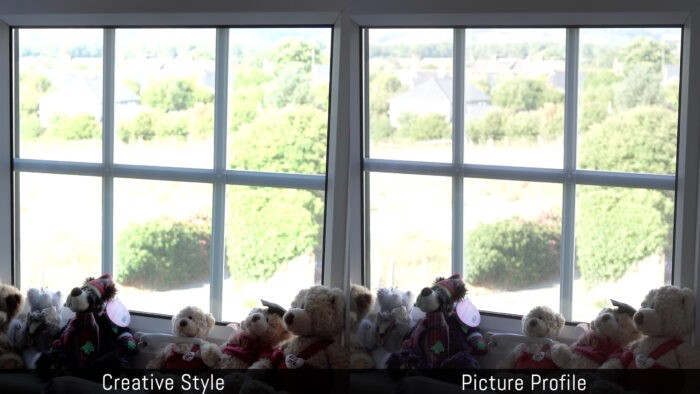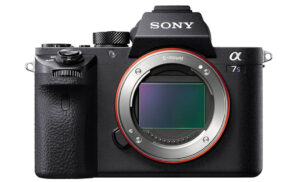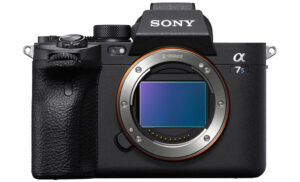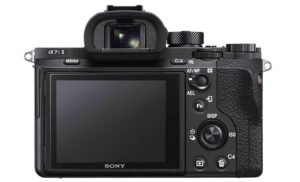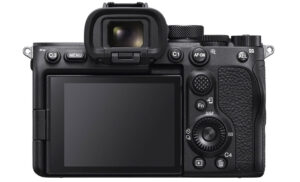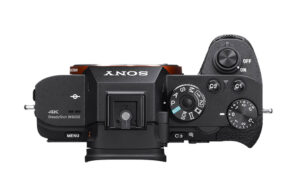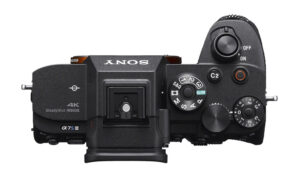The original A7S was an important camera for the mirrorless market because it marked a new evolution of affordable video-oriented products with superb sensitivity, allowing filmmakers to work in all sorts of low light conditions. Indeed it’s no surprise that the camera and its successor the A7S II have been used for professional productions such as, for example, wildlife documentaries by the BBC.
Sony waited a long time before releasing the third generation A7S model. Unlike what we’ve seen many times in the past, the company didn’t introduce a new “world’s first” feature but rather took the necessary time to craft a camera that seems to respond to user requests from the last five years. Let’s see how far the A7S III has come in comparison to its predecessor.
A7S III comparison previews:
A7S II vs A7S III – A7S III vs A7 III
Ethics statement: the following is based on our experience with the A7S II and official information about the A7S III. We were not asked to write anything about these products, nor were we provided any other compensation of any kind. Within the article, there are affiliate links. If you buy something after clicking one of these links, we will receive a small commission. To know more about our ethics, you can visit our full disclosure page. Thank you!
1. Sensor and processor
The resolution on the sensor remains the same, 12MP (12.2MP on the II and 12.1MP on the III), but the A7S III features a new version with bigger pixels (meaning that the space between each pixel has been reduced) and a faster readout (twice as fast in comparison to the mark II model according to Sony). Furthermore, the new sensor has a BSI structure (back-illuminated) to collect more light.

Sony says that the A7S III can record 15 stops of latitude for video with the S-Log3 gamma, which is one extra compared to the 14 stops of the A7S II.
The ISO range is slightly different at the base level:
- A7S II: 100 to 102400 ISO, or 50 to 409600 ISO with the extended values
- A7S III: 80 to 102400 ISO, or 40 to 409600 ISO with the extended values (40 not available in video mode)
Sony says that noise has been reduced at mid and high ISOs by the equivalent of 1 stop.
The new camera has a new processor, the Bionz XR which is eight times faster than the BionZ X on the A7S II. Coupled with the new sensor readout speed, the mark III model has three times less rolling shutter in comparison to A7s II.
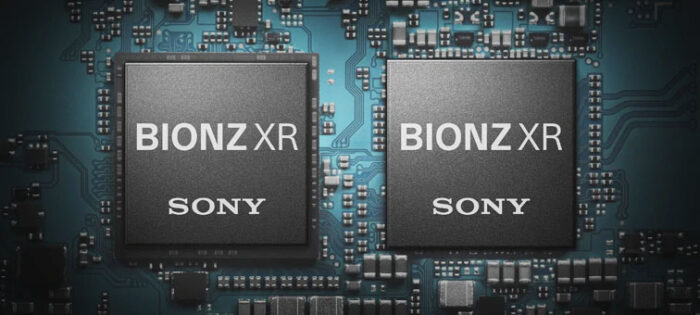
2. Video formats and settings
The A7S II can record 4K video up to 30fps using the entire width of the sensor with full pixel readout. A Super35/APS-C crop is also available (1.5x). Below you can see a video we shot with it a few years ago.
The A7S III goes one step further with 4K recording for a maximum of 120fps. Up to 60p, it uses the entire width of the sensor, whereas with faster frame rates there is a small 1.1x crop.
The upgrades on the new camera don’t end here.
There is internal and external recording at 4:2:2 10-bit, whereas the A7S II does 8-bit 4:2:0 on the SD card, or 8-bit 4:2:2 via HDMI output. 10-bit means that the A7S III records 64 times more colour depth than the mark II model.
There are three different codecs / recording levels on the new camera. In addition to XAVC S which is also found on the A7S II, the mark III model can record with XAVC HS with H.265 compression efficiency, or with XAVC S-I that uses All-Intra compression.
The maximum bitrate is 280Mbps with XAVC S or XAVC HS, and 500Mbps with XAVC S-I. The A7S II goes up to 100Mbps by comparison.
In Full HD / 1080p, the A7S III can record up to 240fps, which is double the 120fps of the A7S II. Furthermore, the mark II model applies a severe 2.2x crop when recording in 120fps.
There is no recording limitation on the A7S III, unlike the mark II model that can do a maximum of 30 minutes per clip. Sony says that you can record for more than one hour in 4K 60p All-I, and more than 30 minutes at 120p (subject to Sony’s internal testing).
Finally, the A7S III will be capable of outputting 16-bit RAW video up to 60p via the HDMI port with the help of the Atomos Ninja V recorder.
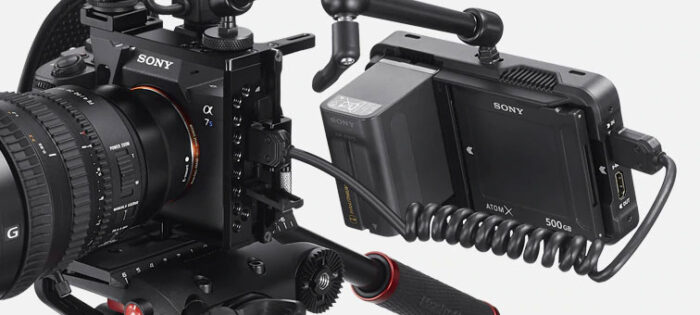
3. Colour and gamma profiles
Up until now, Sony had two separate settings for colour profiles:
- Creative Style, developed for still photography and the in-camera JPGs. There are 13 of them that can be customised with three parameters (contrast, saturation and sharpness) plus 6 presets (Style Box) to save your favourite settings.
- Picture Profiles, designed for video and inherited from Sony’s Cine Alta professional camcorders. There are 9 advanced parameters each with various options, and you can create up to 9 presets (10 on the A7S III)
Although you can use the Creative Style on the A7S II for video, they have less dynamic range and can easily clip the highlights. This is why the Picture Profiles are recommended, as well as S-Log2 and S-Log3 gamma.
- Find out more about Sony’s Picture Profiles in our in-depth guide
The thing about the PP is that they have a lot of parameters and are not easy to configure if you’re a beginner. But even for someone with more experience, it could be useful to have video-friendly profiles that are quicker to configure.
This is why Sony has introduced the Creative Looks with the A7S III. They substitute the Creative Style and give you eight parameters that you can play with: contrast, shadow, highlight, fade, sharpness, sharpness range and clarity. They have been designed for stills and video.
Among the new profiles created for the Looks, there is:
- Film Like Tone
- Instant Camera Tone
- Vivid Tone with Bright Color
- Soft & Highkey

Sony also states that the new camera has improved colour reproduction thanks to the new image processor, including better gradation for skin tones. It also has improved Auto White Balance under artificial light sources thanks to a “Visible Light + IR” sensor.
In addition to all this, the A7S III has two HLG modes (Hybrid Log Gamma, also known as HDR). There is one for stills that produces 10-bit HEIF files with more dynamic range than the standard JPG, and the HLG settings available in the Picture Profiles for video.
S-Log2 and S-Log3 are included on both cameras but the colour science of the S.Gamut3 and S.Gamut3.cine modes have been enhanced on the S III model to match the quality of the PWX-FX9 camcorder. The native ISO when recording with Log is also lower: it’s now ISO 640 on the A7S III (as opposed to 1600 ISO on the A7S II), and you can choose 160 ISO with the extended mode, although the dynamic range is reduced.
4. Image stabilisation
Both cameras feature 5-axis stabilisation at the sensor level. The A7S II has a rating of 4.5EV (CIPA standards) whereas the A7S III sees an improvement of 1 stop (5.5).
Furthermore, the A7S III has a new setting called Active Mode and is a first for the A7 series. It produces a 1.1x crop on the sensor but can further improve the performance for video. Active Mode also uses the data from the gyro sensor inside the camera. It works in 4K up to 60, and Sony recommends using it up to a focal length of 200mm.
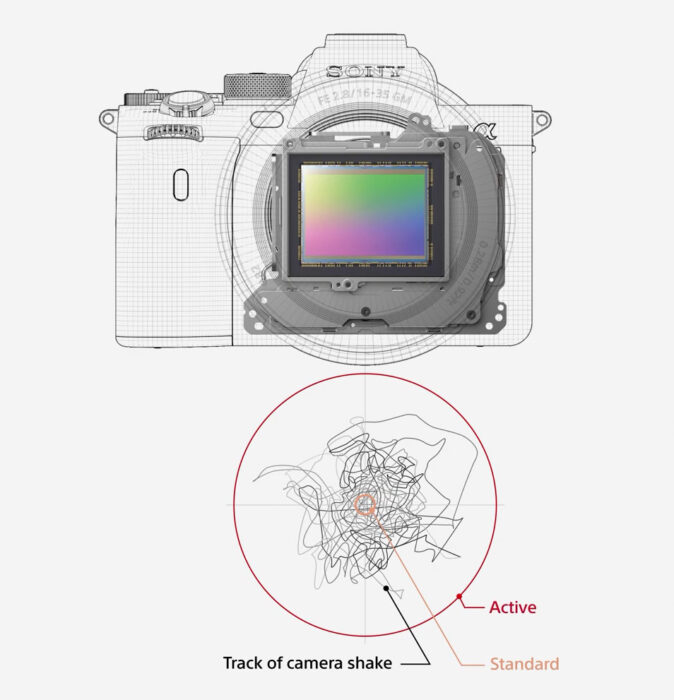
5. Autofocus and Speed
The A7S II uses contrast detection with 169 areas. Although improved over its predecessor, the original A7S, it never matched the speed and precision of other Sony models that have phase detection points.
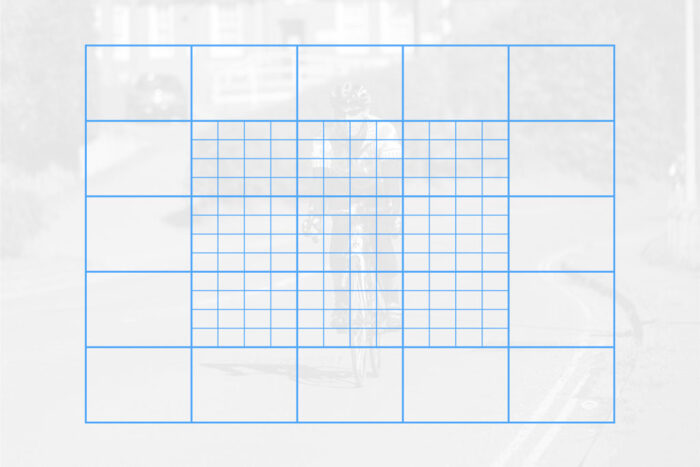
Thankfully, the A7S III comes with a hybrid system and Sony hasn’t overlooked this update: the new camera has 759 phase detection points, the highest number of any A7 / A9 model, and 425 contrast detection points. The phase detection points cover 92% of the sensor area.
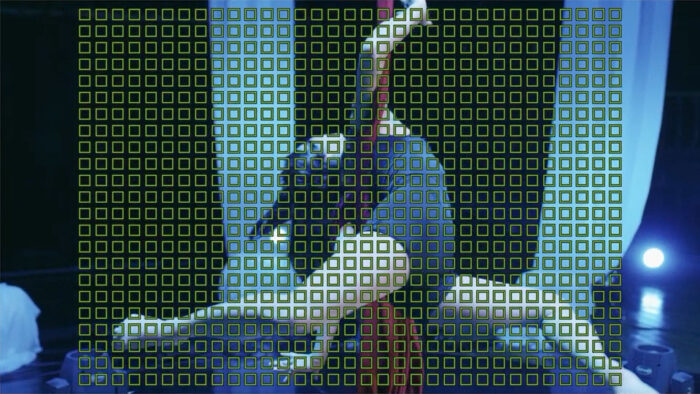
The A7S III also gets all the latest technology that Sony introduced on its E-mount cameras over the last couple of years: Real Time Tracking, Eye AF for animals and Eye AF for video (humans only). Interestingly, Sony says that Eye AF has improved recognition by 30% for video and stills thanks to the new BIONZ XR image processor.
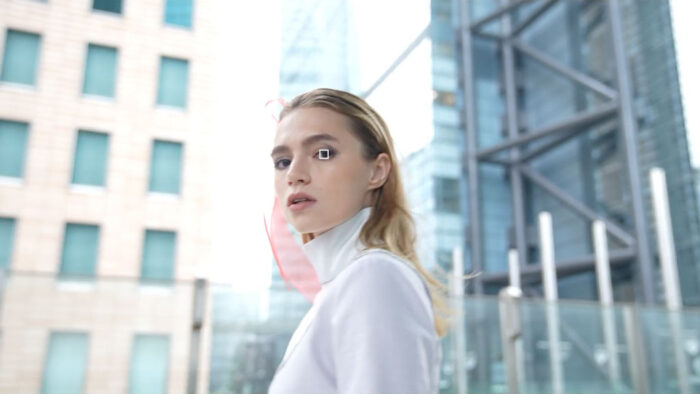
The low light sensitivity has been improved to -6Ev with an f2 lens, which is two stops better than -4Ev on the A7S II.
Touch Focus on the A7S III allows you to override manual focus.
There are new settings to control the AF behaviour called AF Transition Speed and AF Subject Shift Sensitivity. The former allows you to make smooth changes between two focus points, whereas the second allows you to control how quickly the camera should change focus if the subject is momentarily covered or partially covered.
Finally, the A7S III can shoot up to 10fps (mechanical and electronic shutter) with AE and AF tracking, with a buffer of 1000 frames in uncompressed RAW when using the new CFexpress type A card. The A7S II does 5fps only, and an even worse 2.5fps if you want focus priority.
6. Design and interface
The A7S II has an old design whereas the A7S III inherits that of the A9 II and A7R IV: this means a bigger front grip, and larger and more tactile buttons.
The new camera is slightly bigger (especially in terms of depth) to accommodate a heat dissipation structure with a unique Σ (sigma) graphite heatsink that allows it to record video for a long time (it is five times more efficient than the mark II apparently). Both are dust and moisture resistant but the build quality has been improved on the mark III.

There are other changes to the button layout, most notably the addition of the AF Joystick on the rear and the repositioning of the video recording button on top, which is also larger.

Unlike the A7S II that uses 1 SD card slot with UHS-I compatibility, the A7S III can take two UHS-II SD cards. Furthermore, the camera is compatible with a new memory card format, the CFexpress Type A, which is slightly smaller than the SD card but can reach faster writing and reading speeds. It is the first mirrorless camera to be compatible with this card. Note that CFexpress is required in order to record 4K at 120p.
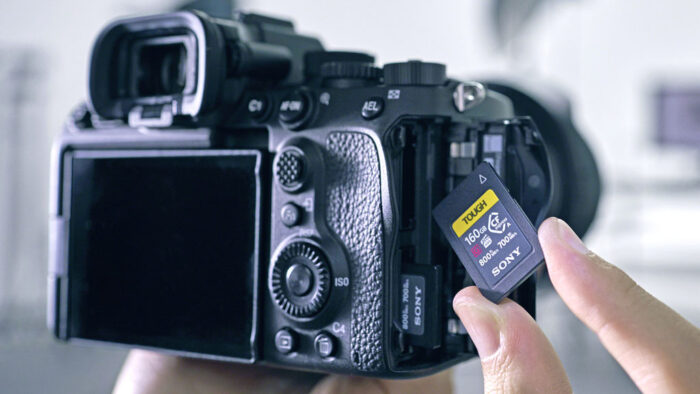
Concerning physical connections, both cameras have audio in & out, HDMI out (micro type on A7S II, full size on A7S III) and USB.
The A7S II uses the micro USB port (2.0) whereas the A7S III has USB C that accepts power delivery and fast charging. The mark III also has a digital audio interface (multi interface shoe) compatible with Digital Audio microphones such as the ECM-B1M.
Another addition to the A7S III and its USB C port is the possibility to use an Android phone with 4G or 5G connectivity to transfer images to an FTP server. A USB C to Ethernet adaptor also allows the camera to connect to a network to transfer images while shooting.
7. Menu system
The menu system of the A7S III has been completely reorganised.
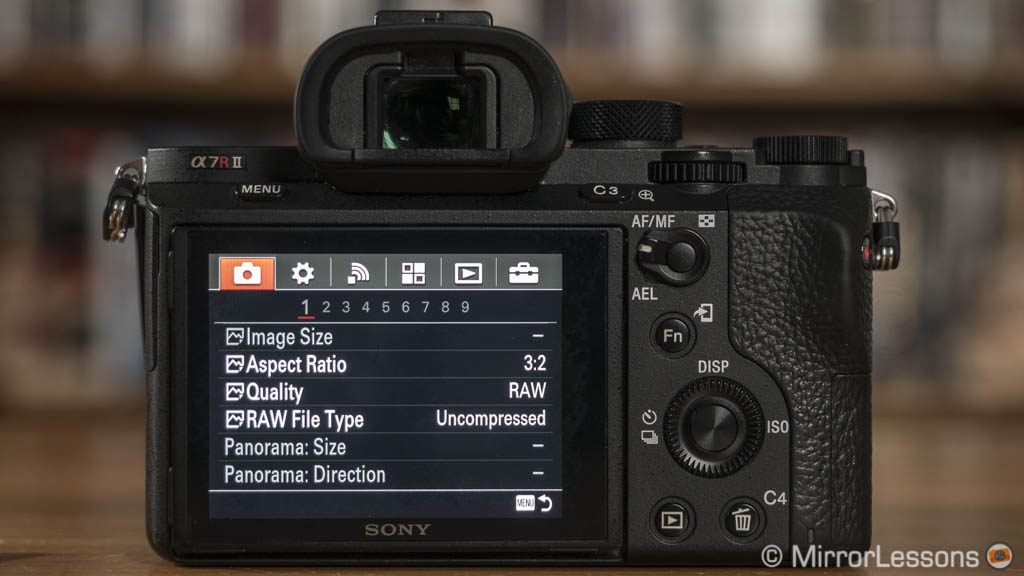
The icons that indicate the various sections are now displayed vertically on the left, and with further diversification between the various categories so that you can access them straight away without scrolling through too many pages. Even better, the new menu has been designed to be used with the touch screen!
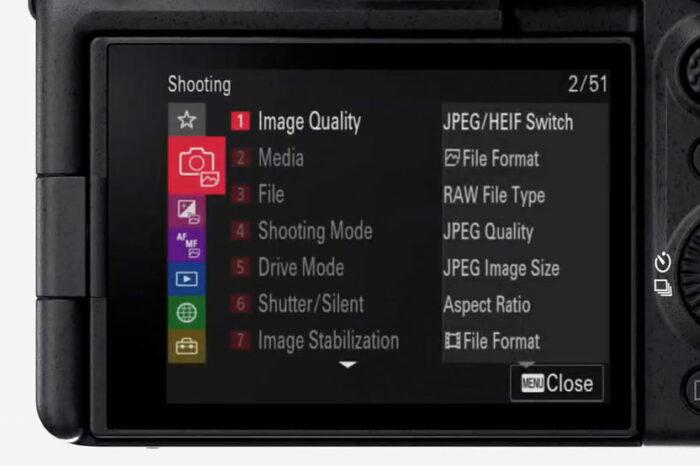
The menu changes automatically depending on whether you are in stills or video mode so that it only shows you the settings that you need. You can also separate settings such as exposure for stills and video. The Fn menu (quick menu) and custom buttons can also be set independently for the two shooting modes.
Sony has also made a few other tweaks such as for example the display of red borders on the LCD screen when recording movies to give you extra visual confirmation.
8. Viewfinder and Monitor
The A7S III is the first mirrorless camera to feature an electronic viewfinder with 9.44M dots, the highest resolution to date. The magnification is higher at 0.9x, the eyepoint is longer at 25mm and the refresh rate goes up to 120Hz. Furthermore, the magnification can be changed to help those who wear glasses. It looks like the most impressive EVF ever made.
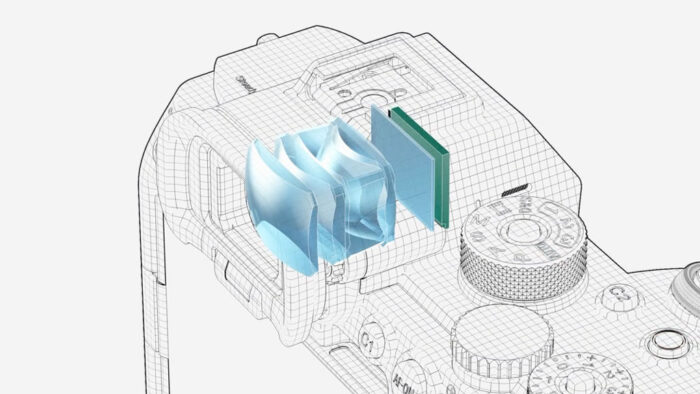
The A7s II pales by comparison: it has 2.36M dots, 0.78x of magnification, a refresh rate of 60Hz and an eyepoint of 23mm.
The rear monitor has also changed: there is a bit more resolution (1.44M vs 1.23M dots), but more important is that the A7S III has a multi angle mechanism so that you can flip and rotate it 180˚ (the one on the A7S II only tilts up and down).
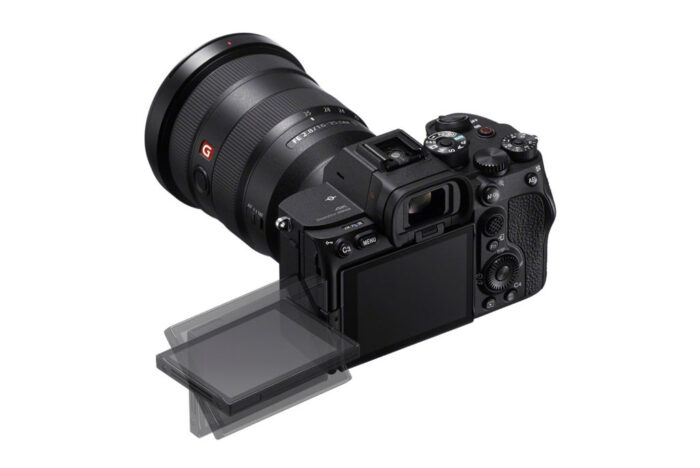
Furthermore, the A7S III screen is touch sensitive and you can finally use it to navigate the menu, in addition to moving the focus point or double tapping to activate magnification.
9. Battery
The A7S II uses the old NP-FW50 battery and the battery life is not great. It has a rating of 310 shots (EVF) or 370 shots (LCD), or 60 minutes of approximate recording time.
The A7S III uses the more powerful NP-FZ100 and that increases the capability to 510 frames (EVF) or 600 frames (with the LCD) and 95 minutes of recording.
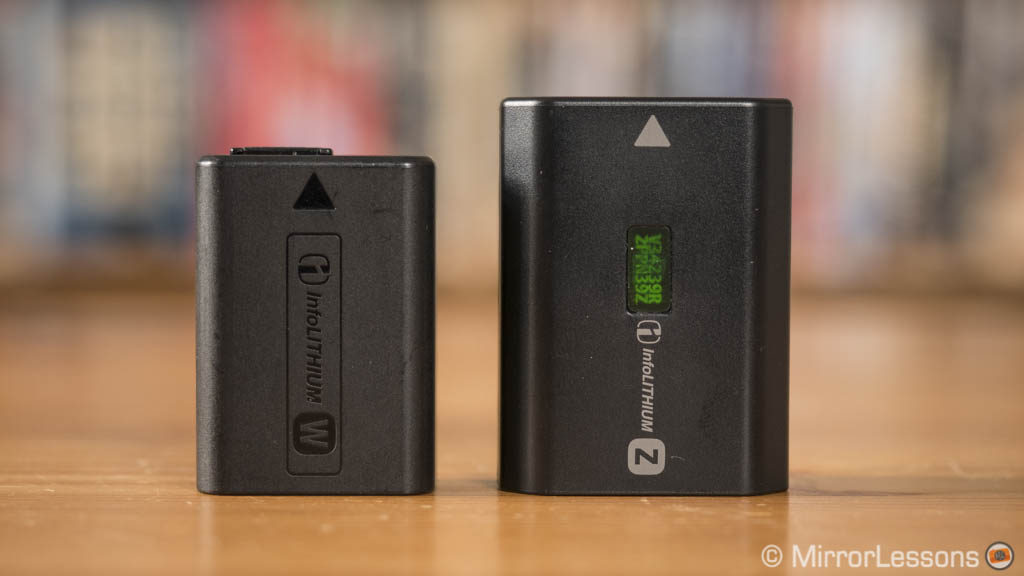
Having used these two batteries multiple times on different cameras, I can definitely confirm that the more recent FZ100 is much better.
Price
The A7S II is an old model but its price has not decreased at the same rate of other A7 cameras. It can be found for $2000, or €1850 / £1800.
The A7S III costs more than what the mark II model cost at the beginning. You can buy it for $3500 / €4200 / £3,800.
Please note that prices are as of July 2020 and US prices are without tax.
Conclusion
The A7S II has been around for a long time, providing exceptional quality in 4K and unmatched high ISO capabilities. But with its old design and the lack of certain features that are becoming standard nowadays, the camera is starting to show its age. It was about time that we saw an upgrade.
Sony made us wait a long time, but judging from the specifications, it looks like it was worth the wait. Not only does the A7S III improve the video recording capabilities by adding 4K at 120fps and 10-bit internal recording, but it also inherits all the other good stuff Sony has introduced in recent years, including state-of-the-art autofocus, a larger battery, a dual card slot, improved stabilisation and much more.
There are improvements for photography too like the faster burst speeds, although this is primarily a product designed for filmmakers. (But if you’re fine with 12MP, I’m sure it can be a great tool for still too).
Unfortunately, all this comes with a price increase that may disappoint some of you, but if you’re looking for a high-end mirrorless camera for serious video work, the only other real contended is the Panasonic S1H, which is not too dissimilar in price.
Reminder: the links below are affiliate links. If you decided to buy something after clicking the link, we will receive a small commission.
Check price of the Sony A7S II on:
Amazon | Amazon UK | B&H Photo | eBay
Check price of the Sony A7S III on
B&H Photo
A7S III comparison previews:
A7S II vs A7S III – A7S III vs A7 III

